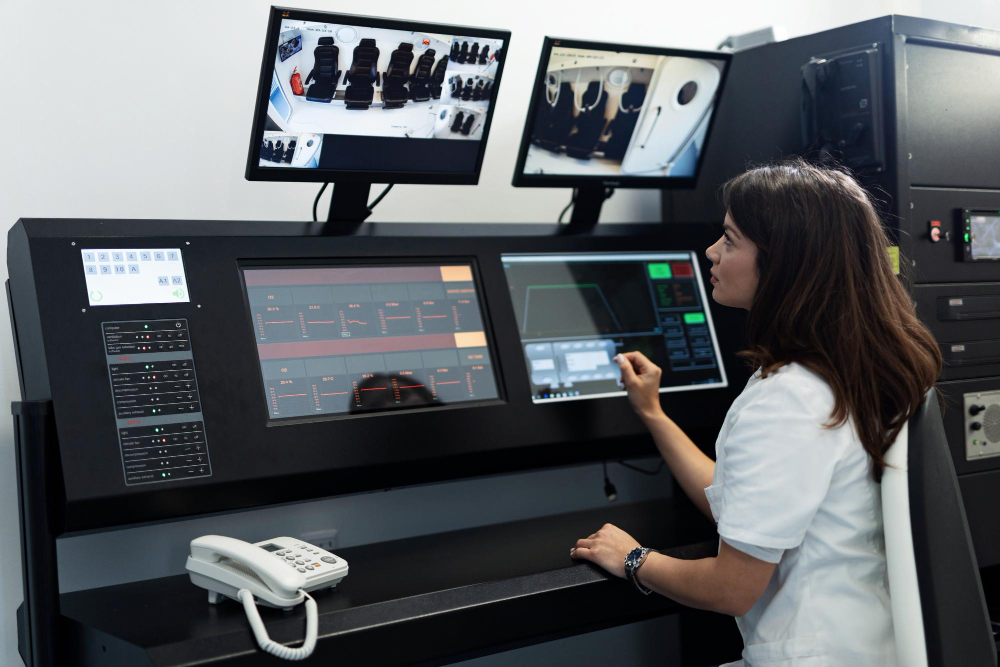Business owners and commercial property managers must provide secure and safe premises for building occupants. Failing to protect individuals within your organization will result in tragic circumstances, potential losses, and legal ramifications.
So, what is central station monitoring, and why is it so crucial for your organization’s safety?
Keep reading as we explain central station monitoring, how to implement it, and the benefits of prioritizing security and safety within your organization.
What Is Central Station Monitoring?
Central station monitoring is a system that ensures the authorities are notified immediately regarding events that present a risk to building occupants. So, the fire alarm would be triggered in the event of a fire. Once the fire alarm is triggered, the central station monitoring system is responsible for alerting the local authorities to ensure an effective and imminent response.
Central station monitoring is essential to a business’s health and safety strategy. Evacuating building occupants and containing the danger is a priority – and speed is necessary to ensure success. By automating the deployment of local authorities, building security staff can focus their full attention on ensuring the safety of building occupants.
How To Deploy Central Station Monitoring
To deploy central station monitoring for your building, you can invest in cloud-based security systems that will help the monitoring service stay aware of the potential risks and threats in your building.
Cloud-based security tools will allow your central station monitoring to access your video surveillance feed, access control logs, and alarm systems from a remote location to investigate the security threat before alerting the authorities. Below you will find details of the additional benefits of implementing such technologies for health and safety procedures within your facility.
1. Cloud-Based Access Control
Access control is essential to secure your facility from intruders. However, you also need to ensure your access control enables emergency response. With cloud-based access control, system administrators, central station monitoring teams, and security teams gain access to remote management features. This means that they can verify the door lock status and check that the building’s perimeter is secure from anywhere. They also gain the ability to view access logs remotely, and, more importantly, operate door locks remotely.
By implementing technology that facilitates the remote operation of door locks, you can ensure your facility is prepared for evacuation procedures in an emergency. Your security personnel or central station monitoring service will be able to initiate evacuation procedures and ensure all doors in the building unlock to allow for the safe evacuation of all building occupants.
Additionally, opting for cloud-based access control allows your central station monitoring team to immediately initiate your lockdown security system to prevent any violent crimes from spreading on your premises.
For these reasons, cloud-based access control can help you to ensure your central station monitoring is informed, agile, and proactive.
2. Cloud-Based Video Surveillance
If an alarm is triggered in your building, it could be a false flag. By opting for a cloud-based surveillance system, you can ensure your central station monitoring team can investigate the incident before alerting authorities.
With cloud-based surveillance systems, your security data is stored in a cloud-based data center, which means it is accessible using a mobile application, cloud-based control center, or browser-based application. Once an alarm is triggered, cloud-based video surveillance allows your central station monitoring service to verify the threat or incident.
3. Cloud-Based Alarm Systems
If you plan to outsource your central station monitoring, cloud-based alarm systems are extremely beneficial. You can opt for cloud-based fire, carbon monoxide, broken glass, intrusion, and gunshot detectors. These systems will provide a mobile alert to your security staff, and will allow your central station monitoring service to receive an alert from an off-site location.
4. Integration
Time is of the essence in central station monitoring and emergency response. Your central station monitoring team needs easy access to all of your security information instantly, without logging into several different platforms.
By opting for cloud-based security tools, you can integrate all of your security hardware to ensure that all security data is hosted on one platform. Keeping all of your security information in one place will allow for quicker insight, evaluation, and response for emergencies.
Why Is Health, Safety, and Security So Crucial To Your Organization?
Health, safety, and security should be a priority for any organization. When people enter your building, they are under your care, and you have a duty to provide for their health and safety. Below are some of the main reasons why health, safety, and security matter for your business:
- Protecting your employees, visitors, and associates.
- Protecting your organization from property damage and theft.
- Minimizing the impact of fires and emergencies on your building’s infrastructure by facilitating agile response.
- Avoiding the cost of legal fees associated with neglectful health and safety procedures.
- Keeping company assets secure and maintaining GDPR compliance.
For the above reasons, investing in central station monitoring services, and opting for more agile and proactive security solutions serves the best interests of any organization.
Summary
To ensure authorities are alerted to any major security breaches, fires, or disasters on your premises, you should consider investing in central station monitoring. You should also consider investing in cloud-based security systems that enable remote management and allow you to keep all of your security data in one place.
It is your responsibility to plan effective emergency response strategies to keep people in your building safe – and increasing the agility of your response strategy will increase the likelihood of success.
































































